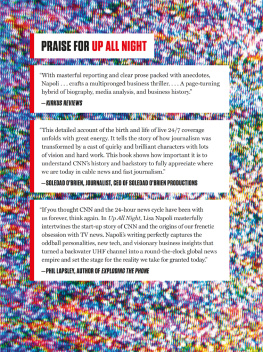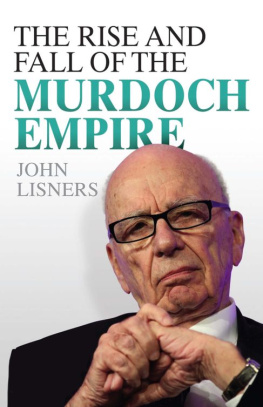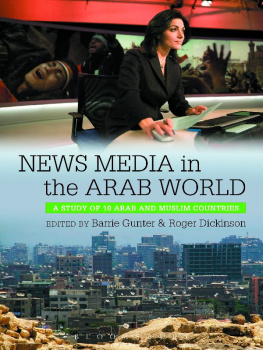
TV News 3.0
An insider's guide to launching and running news channels in the digital age
Zafar Siddiqi
Copyright 2019 by Zafar Siddiqi
All rights reserved.
No part of this book may be reproduced in any form or by any electronic or mechanical means, including information storage and retrieval systems, without written permission from the publishers, except for the use of brief quotations in a book review.
First published in Great Britain in 2019
By Blue Magpie Books
Paperback ISBN 978-1-912937-05-9
Ebook ISBN 978-1-912937-06-6
Printed in Great Britain by Clays Ltd, St Ives PLC
Blue Magpie Books
80-83 Long Lane,
London, EC1A 9ET
www.bluemagpiebooks.com
Contents
About the Author
Zafar Siddiqi was an accountant with KPMG for 18 years, initially as a partner and later as the Managing Director of one of its consultancy practices. He left the world of spreadsheets in the mid-1990s, having spotted an opportunity to launch a TV production house in his native Pakistan specialising in providing business programmes to overseas broadcasters.
A few years later, he saw the chance to start a CNBC business network across 18 countries in the Middle East, the first international brand to broadcast in Arabic. This was quickly followed by his establishing similar networks across 39 countries in Africa, and in Pakistan. Later, he started Samaa TV in Karachi, a 24-hour news and current affairs channel.
He still serves as chairman of two of these channels, devoting much of his time to their strategic direction, not least in wrestling with the challenges they face from the digital revolution that this book deals with.
He lives with his family in Dubai, Karachi and London. He can be reached via his website, TVNews3-0.com.
Introduction
The world of television news is endlessly fascinating. From its origins when the entire family crowded together at a fixed time each evening to watch bulletins from one or two broadcasters to todays intense 24/7, always-connected, multi-screen, multiple-provider world, news has never been more intense or more instant. In such a hyper-competitive environment, the battle to get breaking news on screens first means that the journalists who produce the content are under unremitting pressure.
Managing a TV news business in this day and age has never been more challenging. In its first incarnation, TV news was a comparatively sedate affair; newsrooms were geared up to produce just one or, at most, two 30-minute programmes a day. When Britains BBC launched its TV news in July 1954, the first bulletin did not even use moving film, consisting of a series of still photographs and maps - with the newsreader heard but not seen on screen. It was only the emergence of a rival service, Independent Television News (ITN), in 1955 that compelled the BBC to rethink its approach.
This cozy situation - where, in every country, a small handful of channels at best had a monopoly on TV news (BBC and ITN in Britain, three big networks, CBS, NBC and ABC, in America, and single, state-controlled channels almost everywhere else) -continued until the 1980s when technological advances in cable and satellite delivery ushered in the worlds first 24-hour news channel, Ted Turners Cable News Network (CNN) in America. At first, CNN was derided as Chicken Noodle News for its lack of resources and on-air gaffes, and conventional wisdom said it wouldnt last six months. The then CBS News President, Bill Leonard, asked disdainfully, Why would anybody choose to watch a patched-together news operation that's just starting against an organization like ours that's been going for 50 years and spends $100 million to $150 million a year? The smugness began to wear off when, in January 1986, CNN was the only TV network to provide live coverage of the disastrous launch of the Space Shuttle Challenger, which abruptly disintegrated 73 seconds after lift-off, killing all seven crew members, including a female school teacher.
By the late Eighties, 24-hour news channels had sprung up across the world; this was the beginning of the second era of TV news. In this iteration, there was round-the-clock coverage and much more choice for viewers, but all the expensive kit and large numbers of people required by way of resources ensured that TV news remained the play thing of rich businessmen, state broadcasters or established networks. Fifty years on from its first news bulletin, BBC News had grown to comprise 2,000 journalists and 41 overseas newsgathering bureaux, producing more than 45,000 hours of programming a year - an average of 120 hours of news broadcasting for every day of the year. A far cry from one 30-minute programme a day.
Today, new technological advances - principally the ability to stream video over the internet, in the way that Netflix and Amazon Prime operate - has changed TV news again. It is much easier, and much cheaper, to launch a television news channel today, to reach audiences and to build a successful business on the back of it. This is the exciting revolution that is TV News 3.0.
My adventure in TV began in the mid-1990s when I launched a production company in Pakistan called Telebiz. I was really a novice who knew nothing about the TV industry - an accountant by profession, I was a partner with KPMG in the Middle East - but had some experience of writing and a deep passion for news.
My only previous foray into the world of screens had come when I saw the 1981 adventure film Raiders of the Lost Ark while I was in Buffalo in the US state of New York. We were supposed to have gone on a day visit to Niagara Falls, but it was postponed because of rain and we chose to go to the movies instead. I liked the film so much that I decided to purchase its distribution rights for Pakistan. Ordinarily, foreign films could only be distributed by the state, but United International Pictures (UIP), the owners of the film, invoked a contractual clause declaring the film special, which effectively gave the power to Steven Spielberg, as the producer, to appoint a consultant (in this case, me) to distribute the film, rather than the government agency.
When released in Pakistan, it ran for more than a year, breaking all the countrys box office records. An extra perk for me was that I was invited to the royal premieres of the Indiana Jones sequels in London. It was, indeed, a treat to be walking with the stars and royalty.
When launching my first production company, I was fortunate to have good people around who helped on all aspects of the TV business, particularly the systems side. Engineering was never my forte.
When I decided to launch my first TV news station, in the Middle East in 2003 (called CNBC Arabiya), and wanted to know the ins and outs of doing so, I searched in vain for a book that would suffice as a manual. I found publications that covered different aspects - operations, newsrooms, HR etc - but nothing that encompassed all of how to launch and manage a TV station.
The purpose of this book is to try to fill that gap. I hope - indeed, believe - that TV News 3.0: An insider's guide to launching and running news channels in the digital age has everything that anyone already in the business, or those seeking to become involved in it, needs to know, from the entrepreneur who wishes to start or invest in a TV station to the media student hoping to work in the industry. I also think it may be of some interest to ordinary viewers seeking to understand more about how the news they see on their screens is put together. I feel that I owe this work to an industry which has been so good to me.
Next page








![Greenwald Robert - Outfoxed : [Rupert Murdochs war on journalism]](/uploads/posts/book/99754/thumbs/greenwald-robert-outfoxed-rupert-murdoch-s-war.jpg)


